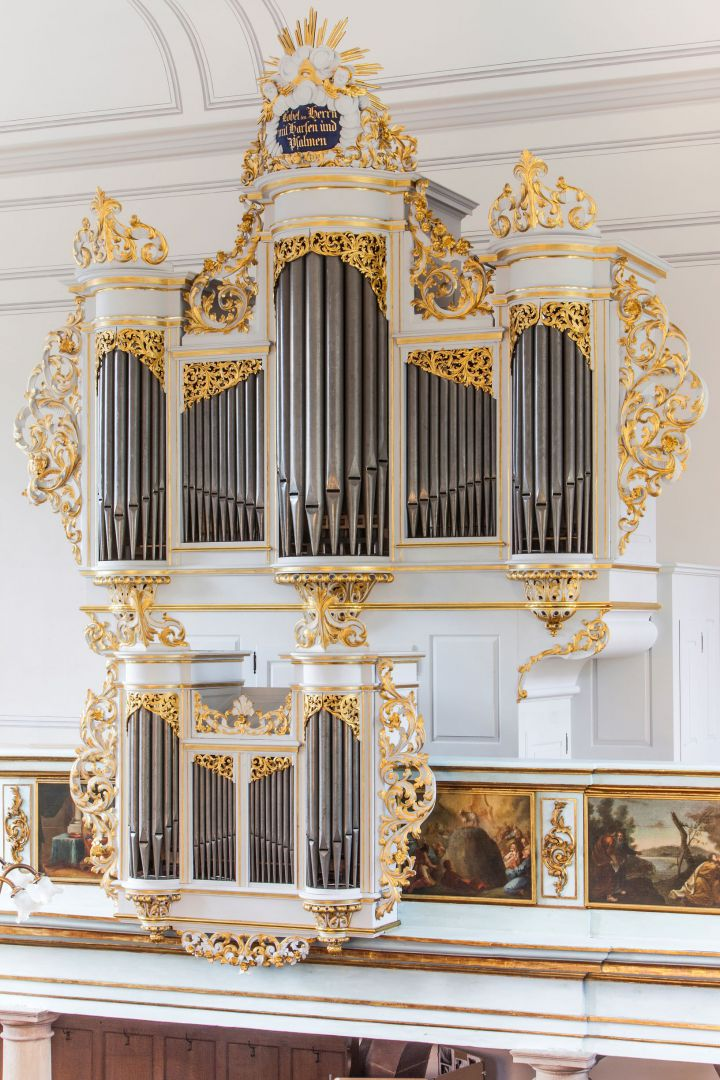Church of Sainte-Aurélie - Strasbourg
Restoration of the André Silbermann organ 1718 in the Church of Sainte-Aurélie in Strasbourg
In terms of the original remains, this instrument contained only parts of the case: the front of the main case with the decorations, and the front and sides of the Positif with the decorations.
In the instrument, 460 original pipes were preserved, only some of which had retained their bevel and mouth height. It was with these elements that we were able to make comparisons with other Silbermann organs that had retained their mouth height.
During this reconstruction, we realized just how different Silbermann instruments are depending on their purpose. It is clear that liturgy plays a major role, and that the Silbermanns designed an instrument differently if it was intended for Protestants rather than Catholics. In the case of Sainte-Aurélie, a Protestant parish, we found that every effort had been made to achieve strength and brilliance, as can be found in Saxony.
This impression is confirmed by the characteristics of the pipework of the organ built in 1738 by Jean-André Silbermann for the Unterlinden convent in Colmar, which, on the other hand, is oriented towards gentleness.
Listening to the organ at Sainte-Aurélie takes us a long way from Marmoutier, but brings us closer to the organs built by Gottfried Silbermann in Saxony.
This reconstruction was also an opportunity to test the value of strict copying.
The musical behaviour correlates with the feel of both the manuals and the pedalboard. The copying of the wooden pipes also proved remarkably effective, with a 16' bass so fundamental and fast that it gave the illusion of the presence of a set of 16' reeds. The wooden basses of the Montre 8' Grand-orgue and Montre 4' in the Positif sound exactly the same as the tin pipes.
Christian Schalck, master cabinetmaker in Neubourg (67), carried out extensive research regarding the proportions of the case. Research was also carried out into the reconstruction of the instrumental part, with visits to most of André Silbermann's organs.
We can only congratulate ourselves, given the musical behaviour of the instrument, the rigour of the copying and the time devoted to the research.
It was a great experience for the whole team.
19 jeux, II claviers, pédale
| Positif de dos,49 notes (C-c''') | Grand Orgue, 49 notes (C-c''') | Pédale, 27 notes (C-d') |
|---|---|---|
| Bourdon 8' | Montre 8' | Soubasse 16' |
| Prestant 4' | Bourdon 4' | Octavebasse 8' |
| Nasard 2' 2/3 | Prestant 4' | Trompette 8' |
| Tierce 1' 3/5 | Flûte 4' | II/P |
| Fourniture 3 rgs | Quinte 2'2/3 | |
| Doublette 2' | ||
| Tierce 1'3/5 | ||
| Cornet 5 rgs | ||
| Fourniture 3 rgs | ||
| Cymbale | ||
| Voix humaine 8' | ||
| I/II |

